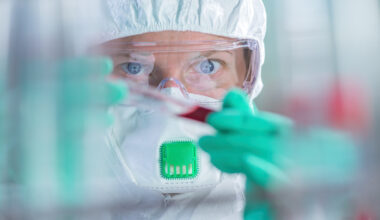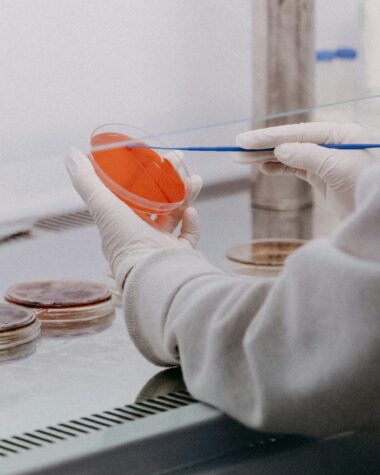Founded in 1980 and headquartered in Cambridge, Massachusetts, Sarepta Therapeutics Inc. (NASDAQ:SRPT) is a cutting-edge biotechnology company at the forefront of developing precision genetic medicines to treat rare neuromuscular and central nervous system diseases. Over the past decade, Sarepta has emerged as the undisputed leader in Duchenne muscular dystrophy (DMD) treatment, a devastating X-linked genetic disorder that causes progressive muscle degeneration and premature death in children, primarily boys. The company’s mission is to fundamentally transform the lives of patients suffering from rare diseases through innovative, RNA-targeted therapeutics, gene therapy, and gene editing platforms.
Sarepta’s journey into prominence began with its groundbreaking work in exon-skipping therapies, leading to the historic FDA approval of Exondys 51 in 2016—the first-ever approved treatment for DMD. Since then, it has continued to expand its DMD portfolio with Vyondys 53 and Amondys 45, providing targeted treatment options for specific mutations in the dystrophin gene. These exon-skipping drugs leverage Sarepta’s proprietary phosphorodiamidate morpholino oligomer (PMO) technology, which is designed to restore dystrophin protein production and slow disease progression.
In recent years, Sarepta has shifted its strategic focus toward the development and commercialization of transformational gene therapies, marking a bold new chapter in its corporate evolution. The company’s most ambitious project, ELEVIDYS, represents a revolutionary gene therapy aimed at delivering a functional micro-dystrophin gene to the muscle tissue of DMD patients. Approved under the FDA’s accelerated pathway, ELEVIDYS is a single-dose treatment with the potential to provide long-lasting, disease-modifying benefits, significantly enhancing the quality of life for affected children.
But Sarepta’s ambitions go far beyond DMD. The company is aggressively expanding its pipeline into other rare neuromuscular disorders such as Limb-Girdle Muscular Dystrophy (LGMD), Facioscapulohumeral Muscular Dystrophy (FSHD), and Myotonic Dystrophy Type 1 (DM1). It is also exploring advanced modalities including gene editing, siRNA technologies, and next-generation delivery systems through strategic partnerships and internal innovation. These pipeline programs are aimed at tackling the root genetic causes of disease, potentially offering curative therapies for conditions that currently have no approved treatment options.
Sarepta Therapeutics is not only a scientific pioneer but also a commercial powerhouse. With deep-rooted relationships with patient advocacy groups, regulatory agencies, payers, and healthcare providers, the company has built a comprehensive infrastructure to support drug development, approval, and market access. Its multi-pronged approach to genetic medicine—encompassing discovery, development, regulatory expertise, and commercialization—makes it one of the most vertically integrated rare disease biotechs in the world.
Despite facing recent challenges, including regulatory scrutiny and safety-related setbacks related to its gene therapy platform, Sarepta remains resilient and laser-focused on delivering life-changing therapies. The company continues to demonstrate robust financial growth, ambitious global expansion plans, and a relentless commitment to innovation. As it navigates the complexities of rare disease drug development, Sarepta stands as a beacon of hope for thousands of families worldwide and a symbol of the transformative potential of gene-based medicine.
With its proven track record, deep scientific pipeline, and unwavering commitment to patients, Sarepta Therapeutics is redefining what is possible in the fight against rare genetic diseases—one breakthrough at a time.
Dominance in the DMD Treatment Landscape
Sarepta has long led the charge in developing targeted therapies for DMD, a devastating and progressive genetic disorder. Its FDA-approved exon-skipping therapies—Exondys 51, Vyondys 53, and Amondys 45—have cemented the company’s foothold in the market. The most revolutionary advancement, however, lies in ELEVIDYS, its flagship gene therapy, which received accelerated FDA approval. This therapy represents a paradigm shift, offering a one-time genetic treatment designed to deliver a micro-dystrophin gene to muscle tissue, potentially altering the course of the disease.
The company has experienced a critical inflection point in its commercial strategy following ELEVIDYS’ label expansion to include all DMD patients aged four and above, regardless of ambulatory status. This significantly broadens Sarepta’s addressable patient base. While the unfortunate recent report of a patient death due to liver failure has led to a temporary suspension of treatment in non-ambulatory patients, the company is actively working to secure approval for an enhanced immunosuppressive regimen that would mitigate future risks and restore clinical confidence.

CHECK THIS OUT: Johnson & Johnson (JNJ) can be the Next Trillion-Dollar Stock and Boston Scientific (BSX) Just Signed a $45M Deal—Here’s What It Means for Investors.
Financial Rebound in Sight
Sarepta’s financial narrative paints a compelling picture of long-term growth. Analysts forecast the company’s revenue will surge from $933 million in 2022 to approximately $4.1 billion by 2026, reflecting robust demand for its therapies and anticipated pipeline milestones. The company’s EPS is expected to swing from negative (-$5.72 in FY 2025) to a profitable $1.84 by FY 2026, signaling a fundamental shift toward operational scalability.
The company’s current revenue stands at $2.23 billion, with an impressive 59% year-over-year growth rate. Its current ratio of 4.02 suggests sufficient short-term liquidity despite ongoing cash burn tied to R&D investments and expansion efforts. At present trading levels near its 52-week low of $18.30, Sarepta’s stock appears meaningfully undervalued, particularly when benchmarked against analyst price targets ranging from $50 to as high as $209.
Advancing a Robust Pipeline Beyond DMD
Sarepta is not a one-product story. Its expanding gene therapy pipeline includes promising candidates for Limb-Girdle Muscular Dystrophy (LGMD), Facioscapulohumeral Muscular Dystrophy (FSHD), and Myotonic Dystrophy Type 1 (DM1). The LGMD programs—particularly SRP-9003 and SRP-9004—are expected to account for treatments covering over 70% of LGMD subtypes. With EMA approval for ELEVIDYS expected in H1 2025 and potential peak royalties exceeding $500 million, Sarepta’s ex-U.S. strategy is gaining significant traction.
Strategic partnerships are amplifying Sarepta’s capabilities. Its collaboration with Arrowhead Pharmaceuticals for FSHD combines proprietary delivery systems with Sarepta’s gene-editing expertise, setting the stage for superior safety and efficacy profiles. Moreover, Sarepta’s growing leadership in siRNA, CRISPR, and gene-editing therapeutics may open up new frontiers in treating rare diseases beyond neuromuscular disorders.
Competitive Advantages and Market Positioning
Despite increasing competition from Avidity Biosciences, Dyne Therapeutics, and other gene therapy entrants, Sarepta’s first-mover advantage, payer access, and established prescriber relationships offer a durable competitive moat. Its deep engagement with patient advocacy groups and familiarity with the rare disease community significantly boost its credibility and brand equity in the space.
Moreover, Sarepta’s infrastructure—both in terms of distribution and clinical trial execution—allows it to scale treatments effectively. As safety protocols are enhanced and the full market potential of ELEVIDYS is unlocked, the company is poised to accelerate patient onboarding and broaden payer coverage.
The Safety Narrative: A Manageable Risk?
The primary bear case against Sarepta lies in the safety concerns surrounding ELEVIDYS. The liver failure incident, while tragic, must be contextualized within the broader dataset of over 800 treated patients. Analysts, including RBC and William Blair, view the market’s -88% drawdown over the past year as a severe overreaction. The company’s proactive response—initiating a new immunosuppressive protocol—suggests that the safety issue is both isolated and manageable.
Still, the incident has temporarily stalled momentum, raising valid concerns about physician hesitation, increased regulatory oversight, and potential reimbursement complexity. Sarepta must demonstrate robust real-world outcomes and long-term data to restore clinical confidence and reignite adoption momentum.
Expansion Potential in LGMD and Beyond
Sarepta’s foray into LGMD could unlock an entirely new vertical for the company. While the LGMD market is smaller than DMD, it remains largely underserved, and Sarepta’s pipeline addresses a majority of its subtypes. Early-stage trial data has shown promising functional and biomarker improvements, setting the stage for BLA filings in the near term.
The successful commercialization of LGMD therapies would not only diversify Sarepta’s revenue streams but also validate its multi-platform approach. Success here could prompt investors and institutions to reprice Sarepta as a multi-indication genetic medicine powerhouse, not just a DMD-centric firm.
Analyst Targets Highlight Massive Upside Potential
The analyst community remains generally bullish on SRPT’s future. As of June 2025:
- Barclays maintains an Overweight rating with a price target of $89
- Cantor Fitzgerald sees SRPT reaching $81
- BMO Capital Markets offers the most bullish view with a $200 target
- Evercore ISI remains conservative at $50, citing execution risk and safety concerns
- Barclays previously priced the stock as high as $209, signaling long-term breakout potential
These valuations suggest potential upside exceeding 300% from current depressed levels, reinforcing Sarepta’s attractiveness to long-term, risk-tolerant biotech investors.
Conclusion: Sarepta Therapeutics Is a Recovery Story in Motion
Sarepta Therapeutics represents a quintessential high-risk, high-reward opportunity in the biotechnology space. The company’s stock has been battered by short-term safety concerns, but its scientific platform, commercial momentum, and financial growth trajectory remain intact. As it navigates regulatory and clinical hurdles, Sarepta continues to invest in innovation and scale.
For investors with a multi-year horizon, Sarepta offers a compelling turnaround narrative. Its dominance in DMD, pipeline optionality in LGMD and FSHD, and improving financials position the company as a future leader in gene therapy. If the company can effectively address current safety concerns, secure global regulatory approvals, and execute on its commercialization strategy, Sarepta Therapeutics could very well stage one of the most significant comebacks in biotech in the years ahead.
CHECK THIS OUT: Johnson & Johnson (JNJ) can be the Next Trillion-Dollar Stock and Boston Scientific (BSX) Just Signed a $45M Deal—Here’s What It Means for Investors.








